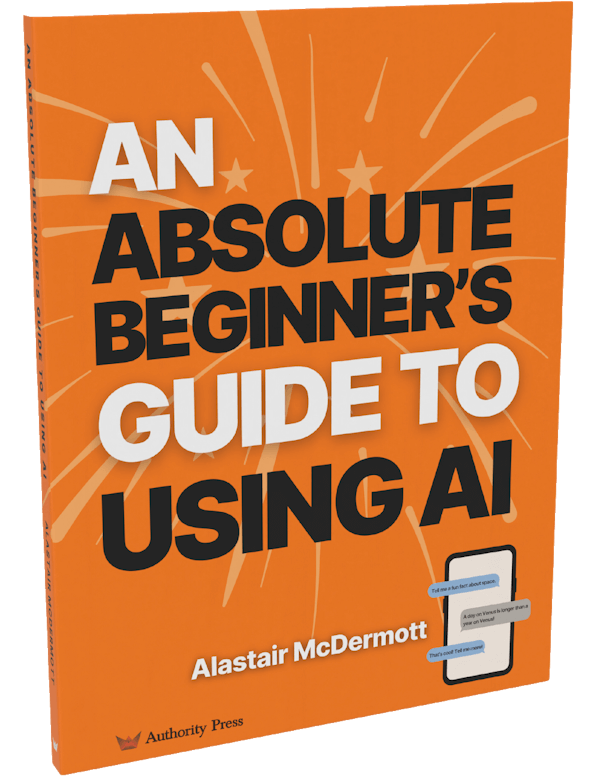30 AI Use Cases for Small Businesses
As a small business leader, you might be wondering how AI can benefit your company. Here’s a practical guide to 30 AI applications, focusing on large language models (LLMs), that could transform your business operations:
1. Customer Support Enhancement
What: AI chatbots that handle common customer enquiries.
How: Integrate a chatbot service like Intercom or Zendesk into your website. Feed it your FAQ and common queries to train it. Start with simple queries and gradually expand its capabilities.
2. Content Generation Assistance
What: AI tools that help create marketing content.
How: Use platforms like Jasper or Copy.ai. Input your brand guidelines and key messages. The AI will generate draft content which your team can then refine.
3. Document Drafting Support
What: AI that assists in creating business documents.
How: Implement tools like Contract Express or Luminance. Input your standard templates and clauses. The AI will help draft documents based on specific inputs.
4. Data Analysis and Reporting
What: AI systems that analyse business data and generate insights.
How: Utilise tools like Power BI or Tableau with AI capabilities. Connect your data sources, and the AI will help identify trends and create visual reports.
5. Personalised Marketing
What: AI-driven personalisation for marketing campaigns.
How: Implement marketing automation tools like Mailchimp or HubSpot. Use their AI features to segment your audience and personalise content based on user behaviour.
6. Inventory Management
What: AI that predicts inventory needs and optimises stock levels.
How: Integrate AI-powered inventory management systems like Unleashed or Dear Inventory. Feed in your historical sales data and supplier information for accurate forecasting.
7. Recruitment and HR Assistance
What: AI tools that streamline the hiring process.
How: Use AI-powered recruitment platforms like TribePad or Workable. Upload job descriptions and candidate requirements, and let the AI assist in screening CVs and scheduling interviews.
8. Financial Forecasting
What: AI models that predict financial metrics.
How: Implement financial planning tools with AI capabilities like Adaptive Insights or Anaplan. Input your financial data and market variables for AI-assisted forecasting.
9. Customer Sentiment Analysis
What: AI that analyses customer feedback across platforms.
How: Use sentiment analysis tools like Brandwatch or Lexalytics. Connect your social media accounts and customer feedback channels to gain insights into customer opinions.
10. SEO Optimisation
What: AI tools that improve website visibility in search engines.
How: Implement SEO platforms with AI features like SEMrush or Ahrefs. Input your website URL and target keywords, and follow the AI-generated recommendations.
11. Translation Services
What: AI-powered translation for international communication.
How: Utilise AI translation services like DeepL or Google Translate API. Integrate these into your communication channels for real-time translation.
12. Meeting Summaries
What: AI that transcribes and summarises meetings.
How: Use AI-powered transcription services like Otter.ai or Trint. Record your meetings and let the AI generate transcripts and summaries.
13. Product Recommendations
What: AI that suggests products to customers based on their behaviour.
How: Implement e-commerce platforms with AI capabilities like Shopify or Magento. The AI will analyse customer browsing and purchase history to make personalised recommendations.
14. Virtual Assistants
What: AI assistants that handle routine administrative tasks.
How: Utilise AI assistant services like x.ai or Clara. Integrate them with your calendar and email to help manage scheduling and basic correspondence.
15. Training and Development
What: AI-driven personalised learning programmes for employees.
How: Implement AI-powered learning management systems like Docebo or Cornerstone. Input your training content and let the AI create personalised learning paths for each employee.
16. Smart Scheduling
What: AI that optimises staff schedules.
How: Use AI-powered scheduling tools like Deputy or When I Work. Input staff availability and business needs, and let the AI generate optimal schedules.
17. Voice-Activated Systems
What: AI assistants controlled by voice commands.
How: Implement voice-activated systems like Amazon Alexa for Business or Google Assistant. Set up routines and commands tailored to your office needs.
18. Virtual Coaching and Mentoring
What: AI-driven career development programmes.
How: Utilise AI coaching platforms like Qoach or Butterfly.ai. Input career paths and skills matrices, and let the AI provide personalised guidance to employees.
19. Brand Monitoring
What: AI that tracks brand mentions across the internet.
How: Implement AI-powered brand monitoring tools like Mention or Brandwatch. Input your brand name and keywords to receive real-time alerts and sentiment analysis.
20. Dynamic Pricing
What: AI that adjusts prices based on market conditions.
How: Use dynamic pricing tools with AI capabilities like Competera or Intelligence Node. Input your pricing strategy and market data for AI-driven price optimisation.
21. Legal Document Review
What: AI that assists in reviewing legal documents.
How: Implement AI-powered legal tech tools like Kira Systems or Luminance. Upload your legal documents and let the AI identify key clauses and potential risks.
22. Event Planning
What: AI tools that assist in organising events.
How: Use event planning platforms with AI features like Bizzabo or Eventbrite. Input event details and let the AI help with scheduling, budgeting, and attendee management.
23. Health and Wellness Programmes
What: AI-driven employee wellness initiatives.
How: Implement AI wellness platforms like Vitality or Virgin Pulse. Employees input their health goals and data, and the AI provides personalised wellness recommendations.
24. Customer Journey Mapping
What: AI that analyses customer interactions across touchpoints.
How: Use customer journey mapping tools with AI capabilities like Smaply or UXPressia. Input your customer touchpoints and let the AI identify patterns and opportunities for improvement.
25. Energy Management
What: AI systems that optimise energy usage.
How: Implement AI-powered energy management systems like GridPoint or Verdigris. Connect your building’s energy systems and let the AI optimise usage patterns.
26. Predictive Maintenance
What: AI that predicts when equipment needs maintenance.
How: Use predictive maintenance platforms like PdM4 or Augury. Connect your equipment sensors and let the AI predict maintenance needs based on performance data.
27. Personalised Onboarding
What: AI that creates customised onboarding experiences for new hires.
How: Implement onboarding platforms with AI features like Enboarder or Talmundo. Input your onboarding content and let the AI create personalised onboarding journeys.
28. Fraud Detection
What: AI systems that identify potential fraudulent activities.
How: Use AI-powered fraud detection tools like NICE Actimize or Feedzai. Integrate with your transaction systems to allow the AI to flag suspicious activities in real-time.
29. Product Development Insights
What: AI that analyses market trends for product development.
How: Implement AI-powered market research tools like Crayon or Attest. Input your product categories and let the AI provide insights on market trends and competitor activities.
30. Social Media Management
What: AI tools that assist in managing social media presence.
How: Use social media management platforms with AI capabilities like Sprout Social or Hootsuite. Connect your social accounts and let the AI help with content scheduling and performance analysis.
Conclusion
While these AI applications offer exciting possibilities, it’s crucial to assess which ones align with your business needs and resources. Start small, perhaps with one or two applications, and gradually expand as you see benefits. Remember, AI is a tool to augment your team’s capabilities, not replace human insight and creativity. As you explore these AI use cases, you’ll be taking important steps towards future-proofing your business in an increasingly digital marketplace.





